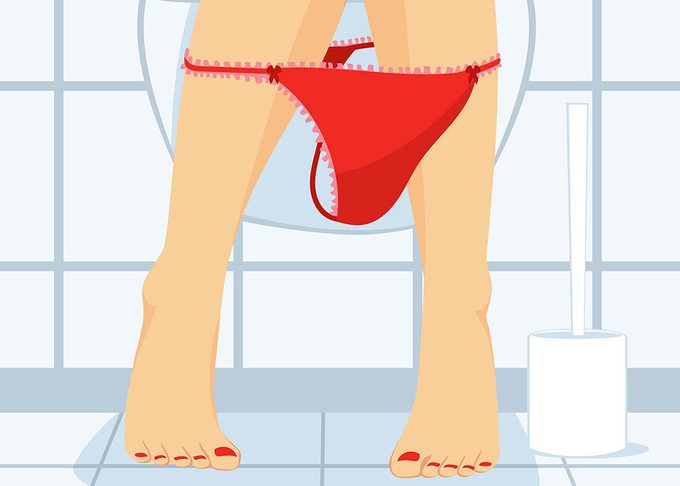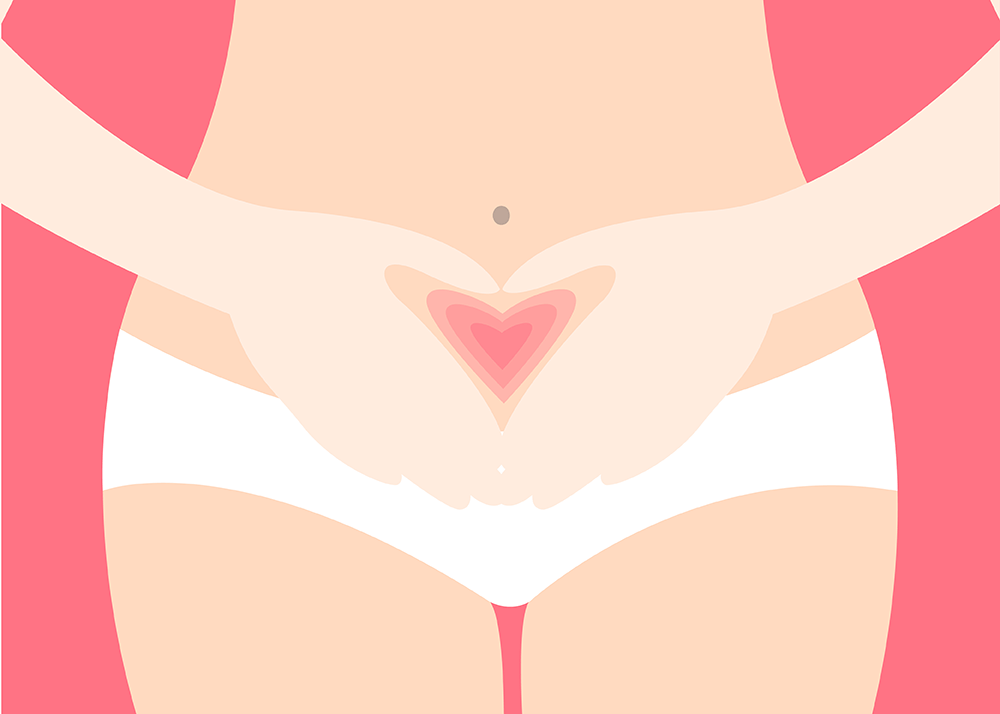Yeast Infection Cures For a Happy, Healthy Vagina
Clear up an itchy, uncomfortable yeast infection with these over-the-counter remedies.

Sooner or later, three out of four women will get a vaginal yeast infection, a condition characterized by itching, irritation and discharge. “[It is] caused by an overgrowth of yeast,” says Dr. Barbara Romanowski, a clinical professor in the department of medicine at the University of Alberta.
“There are normally hundreds of different kinds of bacteria and yeast in the vagina, but when that balance is disrupted, you get an infection.”
Sufferers can experience itching both inside the vagina and on the outer labia; a burning sensation (especially during sex or urination); redness and swelling of the vulva; and an abnormal vaginal discharge (usually thick and white or yellow in colour).
Antibiotics, steroid medications, chronic stress and a diet high in sugar and processed foods can make a woman susceptible to yeast overgrowth, says Carrie Watkins, a naturopathic doctor based in Victoria. The use of hormone therapies such as oral contraceptives or hormone replacement, and even regular monthly hormonal fluctuations, can also be triggers.
“Many women experience an increase in incidence or a worsening of symptoms in the week before getting their periods,” says Watkins.
Preventing your yeast infection
Douching can also disturb the normal bacteria and cause an infection. And it is possible, though extremely rare, to contract the condition from a male sexual partner. (However, men can develop balinitism, an irritation of the head of the penis, after contact with yeast, and should seek treatment.)
Of the 75 percent of females who get a yeast infection, five to 10 percent will experience chronic episodes. Type 2 diabetes, especially if it’s poorly controlled, or an impaired immune system are the most likely factors.
Otherwise, good genital hygiene is the best prevention, says Romanowski. More tips to remember:
- Avoid douching or the use of potentially irritating feminine hygiene sprays, bubble baths, soaps or laundry detergents with strong fragrances.
- Choose underwear made from breathable, natural fabrics such as cotton, and don’t wear it to bed or sit for long periods in tight-fitting clothing.
- After a bowel movement, wipe from front to back: If fecal bacteria gets into the vagina, it can disrupt the natural balance of yeast to bacteria.
Although a yeast infection can be uncomfortable, “there are no risks if you leave it and let it run its course without treatment,” says Romanowski. “For most women, it will just go away.'”
But if you want symptom relief, and you’ve had one before and are familiar with the symptoms, then it’s safe to take one of these over-the-counter remedies for up to seven days.
If you are pregnant, aren’t sure if you have a yeast infection or have never had symptoms before, then you should seek medical advice. Since the symptoms are similar to bacterial vaginosis and some sexually transmitted infections, it’s important to get a correct diagnosis.
Also, check in with your doctor if the infection persists.

Ovule and cream treatments
Examples
- Monistat 3 Ovule Therapy
- Canesten 1 Day Cream
- Clotrimaderm Vaginal Cream 1%
- London Drugs Clotrimazole
How they work: Monistat contains the active ingredient miconazole. Canesten, Clotrimaderm and London Drugs Clotrimazole all contain clotrimazole.
“The mechanism of action is the same’they are antifungals that kill the yeast and stop it from multiplying,” says Pindy Janda, assistant pharmacy manager at London Drugs in North Delta, B.C. Both types of medications are available in ovule or cream format.
“Ovules are capsules that come with an applicator, similar to a tampon, to help you insert them high into the vagina,” says Janda. The creams also come with an applicator for insertion into the vagina, and can also be applied around the labia to calm external itching.
Both Monistat and Canesten sell combination treatment kits containing ovules for internal symptoms and creams for external relief.
Need to know: Miconazole and clotrimazole products are available in one, three, six, and seven-day formats.
Which one you choose depends on the severity of symptoms. For a mild yeast infection, a treatment course of one to three days may be appropriate, but for stubborn or recurrent infections, go for a longer duration of therapy.
Although symptom relief may start sooner, it takes any formula at least three days to rid your body of the infection, says Janda.
Whether you choose an ovule or a cream, always insert it at bedtime. Remember that the higher it goes up into the vagina, the better the results. You may have discharge during the day, so wear a panty liner and change it regularly (if you are menstruating, use pads instead of tampons).
Although you can have sex while using these products, it may be painful, and the medications may damage condoms and diaphragms.
If you are pregnant, breastfeeding or have an allergy to topical products that contain these ingredients, check with your doctor before using them.
Oral treatments
Examples:
- CanesOral
- London Drugs Fluconazole
How they work: Available as a single-dose treatment, fluconazole (the active ingredient in both products) is an oral medication that works similarly to miconazole and clotrimazole.
However, “because it is taken orally, it gets processed by the liver and put into the bloodstream, where it recognizes the fungus and kills it,” says Janda.
Need to know: Although you ingest only one tablet, it takes three days for fluconazole to counter the infection, with symptom relief starting after the first 24 hours.
For faster relief, use it in conjunction with a topical miconazole or clotrimazole cream. If symptoms persist, do not repeat treatments without consulting your doctor. This medication can be taken with or without food, although you should take it with a meal if you have a sensitive stomach.
Don’t use fluconazole if you are pregnant or breastfeeding, and check with your pharmacist or physician first if you are taking other medications.

Probiotic treatments
Examples:
- Provacare Pro-biotic Vaginal Care Ovules
- Bio-K+ Original Fermented Milk Pro-biotic
- Culturelle Digestive Health
- HMF CandiGen Suppositories
- New Chapter Probiotic FlorAll
- Renew Life Ultimate Flora Vaginal Support Probiotic
- RepHresh Pro-B
How they work: The bacteria naturally present in the vagina are called lactobacillus and, according to Watkins, women who are prone to yeast infections, are using antibiotics or have a compromised immune system may benefit from supplementation with this ingredient to restore the vagina’s bacteria-yeast balance and prevent infections.
“The healthy bacteria help control yeast as well as create a slightly acidic environment in the vagina, which is less hospitable to yeast.”
Provacare and HMF CandiGen are vaginal ovules that contain lactobacillus bacteria, while Culturelle, New Chapter, Renew Life and RepHresh Pro-B are oral supplements that contain lactobacillus. Bio-K+ is a lactobacillus-based fermented milk drink.
Need to know: “There are no studies to prove [that probiotic] treatments are effective, but I’ve seen a number of patients who swear by them,” says Romanowski. Since supplements and beverages are free of side effects, it may be safely used with other treatments or for preventive purposes.
Make sure to refrigerate them to ensure the potency of the live cultures. If you decide to use an ovule format, insert it before bedtime. Also be sure to wear panty liners during the daytime.
“It often takes a minimum of seven days to see results [from these suppository preparations],” says Watkins. It can take longer to see results with oral supplements depending on factors such as a person’s overall health. Consult with your doctor before repeating a course of treatment.
Natural remedies
• Add baking soda to your bath to take away the itch, says Romanowski.
• Apply natural, unsweetened yogurt to the labia; it may help to relieve itch and irritation, advises Watkins.
• As well, you can ask a naturopathic doctor about oral herbal antifungal preparations such as garlic, grapefruit seed extract and caprylic acid, which can provide additional support for the immune system. Boric acid suppositories (recommended only for women with chronic yeast infections) are also a natural approach to controlling yeast.




